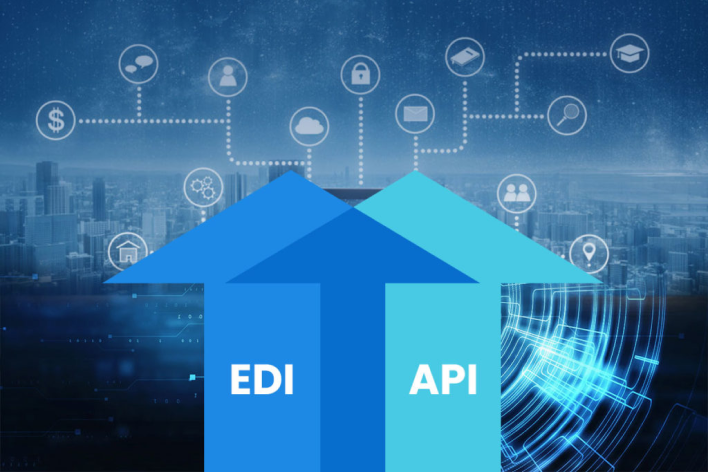Introduction
As Darwin’s theory states, “those individual organisms, who happen to be best suited to an environment survive and reproduce most successfully, producing well-adapted descendants. Nature filters out poorly suited individuals.”
The same is true for the technology world, where technologies go through cycles of natural selection in different business environments. And those technologies that adapt and meet the requirements of various challenging business environments survive and dominate.
This blog will briefly discuss two technologies – Electronic Data Interchange (EDI) and Application Programming Interface (API).
Do these technologies complement or contrast each other? Do they have the edge over the other by any means? How does the older of these two technologies survive in the advent of the newer one?
History
In the 1960s, supply chains started using the EDI. Since then, EDI has become the go-to solution for document exchanges for businesses from retail to the healthcare and automotive industries. EDI supports different communication standards (a.k.a protocols) and messaging standards. Communication standards are the method of transferring data like OFTP, AS2, and messaging standards define how data must be formatted within the context of the protocol like EDIFACT, X12, and G12.
EDI, by definition, is a process that allows one company to send information to another company electronically rather than with paper.
In the early 2000s, modern web APIs started crystallising even though APIs have existed in different forms and names long before. For example, eBay launched their API(s) around Nov 2000 and Amazon by July 2002. The most popular flavours of APIs are SOAP and REST. Simple Object Access Protocol (SOAP) API uses an XML-based protocol for regulated data, and REpresentational State Transfer (REST) API tends to use HTTP and JSON, which lighten the payload.
API, by definition, is a contract between a data provider and a data user. In short, APIs have become powerful tools that make disparate systems talk to each other by exchanging data.
Capabilities
EDI offers capabilities for trading partners, including customers, suppliers, or vendors, to connect to internal systems of a business and transfer core supply chain centric B2B documents like Purchase Orders, Invoices, Orders, Supplier Serials, etc.
Supply chain data transfer involves transferring bulk amounts of data, and EDIs inherently support the batch exchange of mass data adhering to industry standards and fulfilling compliance regulations.
EDI solutions simplify onboarding new trading partners and configuring bespoke trading partner profiles. In addition, manual data processing involving multiple business partners is significantly reduced. However, EDI data is stored and transmitted and therefore has limited use for real-time access and responsiveness.
APIs core capability enables real-time, synchronous data exchange, mostly unintended for bulk data. In addition, real-time data validations are possible with APIs. APIs forefront the digital transformation of the entire business landscape, making it manageable and speedy.
APIs can connect and move data between on-premise systems and cloud applications. In addition, many widely used, proven open-source applications augment APIs by providing API gateway capabilities like API security and management.
Verdict
Supply chain management (SCM) is an interconnected network involving many stakeholders. Most of them rely on EDI for B2B communications. Any change could potentially impact the overall supply chain. No business will move out of EDI unless there is a compelling need.
APIs can be a workable alternative for trading partners not currently using EDI. However, building a data layer for API is required. And EDI is still a key differentiator in better performing batch processing.

Having discussed the pros and cons of both the technologies, it is evident that they are both still indispensable masters of data exchange and very relevant to solving the contemporary problems in B2B transactions.
Instead of looking at APIs as a replacement for EDIs, we see them as a modern technology that complements EDI. A hybrid solution of API and EDI could offer exponential benefits.
Integration solutions can make EDI and API work together. With a rich heritage of industry-specific data language and format offered by EDI and API that comes with abilities to validate and enrich data by connecting to on-prem & cloud applications, they can form a robust integration solution.
So, the winner is neither API nor EDI; it is ‘integration’ that unlocks numerous possibilities to use these technologies to improve and modernise the rapidly changing global supply chain ecosystem.
You can contact our team for any work related to EDI or API to get a proper solution.






